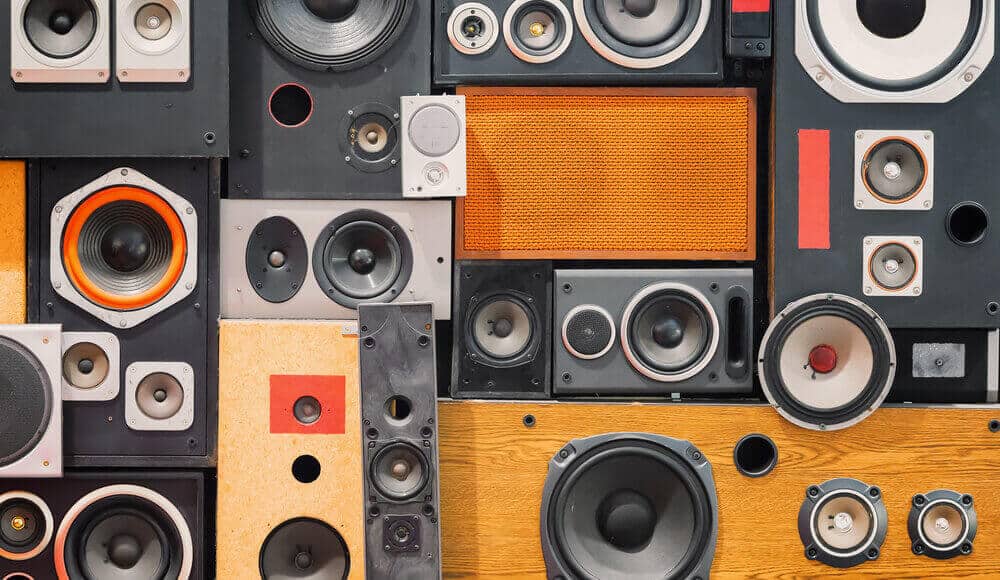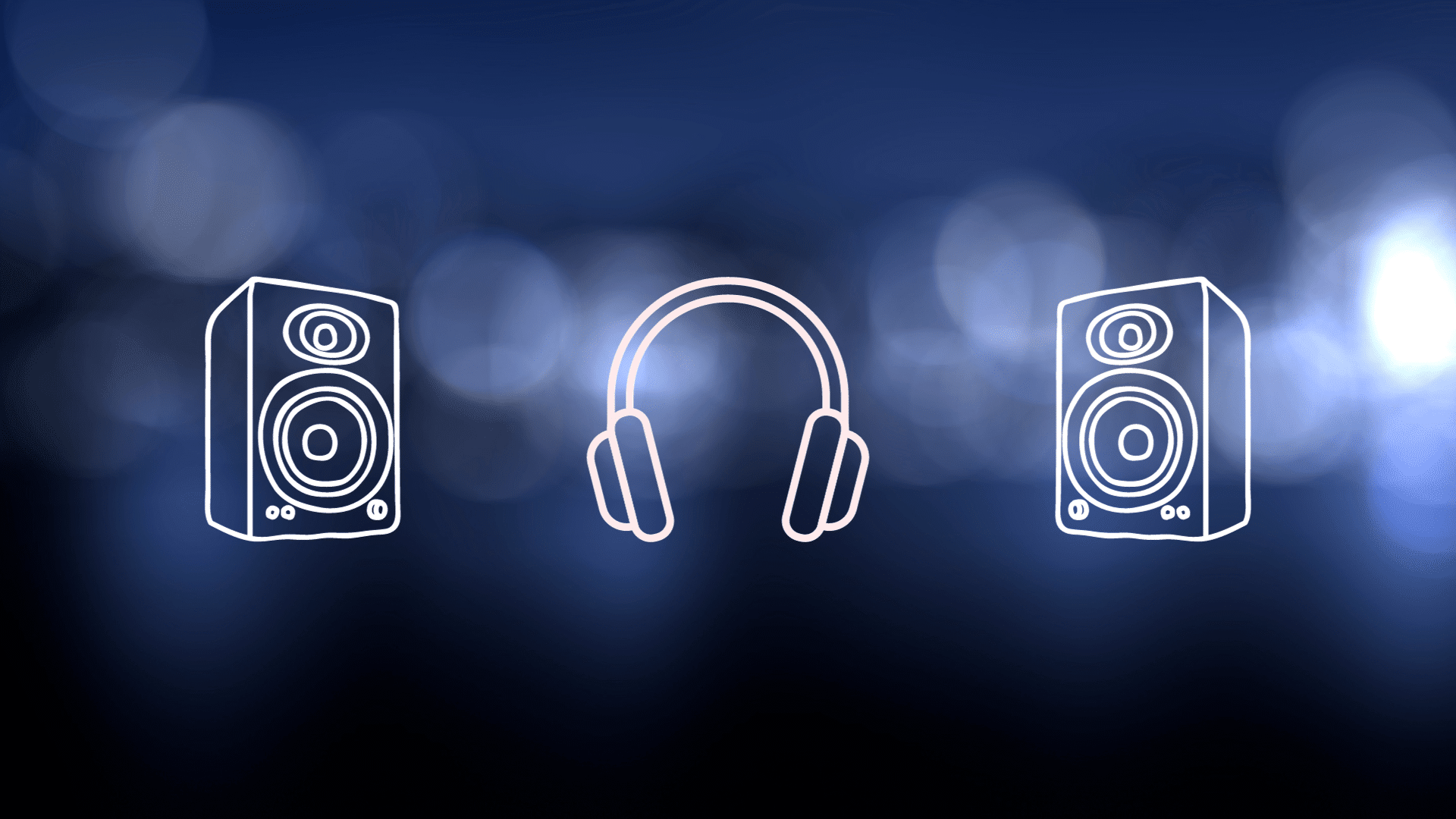So, you’re seeking to grasp a tune your self in 2023? Effectively, you’ve come to the correct place.
Nevertheless, this won’t be your typical information on methods to grasp a tune.
Most guides and YouTube tutorials offer you an inventory of plugins to make use of. However they don’t offer you context. And so they don’t let you know why you must use them.
So on this information, we’re going to do issues in another way. We aren’t going to provide you a magic recipe that (supposedly) works for each tune. As a substitute, we’re going to cowl every part it is advisable take into consideration when mastering a tune.
Extra particularly, we’re going to have a look at:
- the correct mindset earlier than you grasp a tune
- methods to arrange the correct setting to grasp
- the instruments you should use to grasp a tune
- the state of the loudness wars in 2023
Let’s get began 👇
Tips on how to Grasp a Track – Let’s Clear Some Misconceptions…❌
Earlier than we dive in, let’s clear a couple of myths and misconceptions about mastering.
Should you haven’t mastered a observe your self earlier than, these is likely to be some harsh truths.
Nevertheless, studying these classes early will spare you numerous ache in the long term 😉
Mastering Can Repair Your Dangerous Combine
That is the primary lesson you’ll study when mastering your individual songs.
Mastering won’t ever, ever repair a foul combine.
The mastering job is to take a combination and current it as a product for the listener. The standard of that product finally depends on the standard of its mixdown. Bought points getting your grasp loud sufficient, or fixing problematic frequencies? Then you definitely would possibly want to return to the combo.
You Can Solely Grasp a Track With Costly Plugins
Flashy plug-ins and costly gear is likely to be nice belongings to at least one’s mastering arsenal. Nevertheless, they won’t make mastering selections for you. Your ears and the choices you make with them are what issues most in mastering.
Working example, you will get a great-sounding grasp with simply inventory and free plugins.
Don’t imagine me? Carry on studying 👀

Mastering is Solely About Getting a Observe as Loud as Attainable
Mastering is about making a presentable product. For business genres like pop and hip-hop, there may be undoubtedly a push for loudness. However this isn’t all the time the case.
Though mastering consists of getting a observe as loud as attainable, there are various different targets at play:
- Ensuring your observe sounds good on all units
- Including that further 1% to make your observe shine (with refined saturation and EQ’ing)
- Correcting minor points when it comes to frequencies and dynamics
Earlier than You Grasp a Track: The Guidelines 📋
Earlier than you get able to grasp a tune, two issues should be true:
- Your observe is prepared for mastering
- You should be prepared for mastering 😅
What do I imply by this?

On the one hand, your combine wants to satisfy quite a few standards. Solely then is it able to be mastered.
Typically, that is known as a pre-master. A pre-master must verify the next packing containers:
- combine bus stage doesn’t exceed 6dB (together with peaks)
- sufficient dynamics
- the general combine must sound good, i.e. no main must be mounted
- no audible pops or cracks attributable to quantity chopping out from samples
The appropriate mindset
Secondly, it is advisable set your self up for mastering session.
If that is the primary time you grasp a tune, it’d seem to be a tedious course of. Nevertheless, mastering generally is a very artistic a satisfying course of. All of it depends upon the perspective you present up with.
Listed below are a couple of suggestions you possibly can observe to place your self in the correct house of thoughts:
- Method your mastering session as a artistic course of. Maintain all of the habits you could have whenever you do a writing or sound design session (cup of espresso, common breaks, and so forth.)
- Don’t count on your mastering session to be a 1h affair. You’ll most likely want to return to your combine to repair points, export a number of variations, pay attention to varied units, and so forth. Prepare 😉
- Hearken to music for 10 to fifteen minutes earlier than your mastering session. Ideally tracks you’re keen on that put you in temper 😊. As a bonus, these songs may be in the identical style because the one you’re about to grasp. That approach, your ears will naturally be tuned to “what sounds good”.
- Hearken to your pre-master a couple of instances and take notes. What must be achieved right here? Do you simply want to spice up the general quantity? Add some stereo width? Tweak some particular frequencies?
Why Your Atmosphere Issues When You Grasp a Track 🏠
Mastering a tune is all about making it sound good on a number of units.

For this reason your listening setting issues a lot. Ideally, you’re working in an acoustically-treated room or studio that you understand nicely.
Nevertheless, most individuals don’t have the posh of working in a studio.
If that is your case, I recommend doing all your grasp completely in your headphones. This is likely to be a controversial opinion, however that is the way you’ll get the very best outcomes. In case your room will not be correctly handled for resonances, your ears will likely be tricked into adjusting frequencies that don’t want fixing.
Use headphones together with a spectrum analyzer (extra on that later). Then, hearken to your grasp on completely different units. These needs to be units that you just hearken to music regularly. Examples embody:
- your smartphone speaker
- a small mono Bluetooth speaker
- you automobile speaker
How does your grasp examine to professional tracks? Does it sound quieter, thinner, and fewer dynamic? Use this studying to regulate your grasp additional.
An alternative choice to headphones-only mastering is to make use of Sonarworks. Software program like Sonarworks can assist fight the drawbacks of blending in an untreated room by tuning your audio system to accommodate the sound of the room.
Proper, let’s dive into the half you’ve all been ready for 😇.
On this part, we’re going to cowl a number of the most necessary instruments utilized in a mastering chain. Necessary observe: you don’t want to make use of all of them on every grasp you do! Use a plugin with a particular purpose in thoughts, and never simply “as a result of somebody informed you” 😉.
Referencing
Referencing is a very powerful side whenever you grasp a tune.
Should you don’t reference, you’re basically working blind. You haven’t any comparability factors to let you know in case you’ve finished job or not.
Virtually, referencing consists of taking a professionally blended and mastered observe. This will likely be your north star, and enable you to information your selections when it comes to:
- frequency spectrum (does your observe have an excessive amount of sub, or too little highs?)
- dynamics (have you ever utilized an excessive amount of compression and misplaced all sense of dynamics in your observe)
- stereo placement (does your observe sound too “slim” in comparison with knowledgeable one?)

Professional-tip: you should use a number of reference tracks for various functions! For instance, you would possibly just like the bass frequencies in a single observe and the highs of one other. Otherwise you would possibly just like the stereo picture of a 3rd observe. Mix distinction reference tracks to create your individual sonic id.
It’s also possible to use particular plugins for referencing equivalent to Reference2 or MCompare.
Another choice is to make use of a number of reference tracks, with particular filters utilized on them:

EQ
Corrective EQ will likely be one of many first steps you’re taking when mastering a tune.
Virtually, there are 3 varieties of EQ’ing you are able to do at this stage:
- Mid/Aspect and Left/Proper EQ’ing
- Automated (or dynamic) EQ’ing
Let’s dig into whenever you would possibly use every sort when mastering a tune.
Commonplace EQ
A typical EQ (or static EQ) is an EQ that cuts sure frequencies completely. That is most likely the EQ you’re most aware of:

When mastering, a static EQ needs to be restricted to minor corrections.
If you end up boosting or chopping greater than 1 or 2dB, then there’s a problem with the combo.
One space the place this isn’t strictly true is for low-cutting and high-cutting the observe. The human ear can solely understand sound between 20 Hz and 20,000 Hz (roughly). Because of this something under and above this threshold may be safely eliminated.
Right here, you must experiment with completely different EQ slopes, as this can extremely have an effect on how your low-end sounds:

A static EQ may additionally be good to:
- add a little bit of readability within the high-end (above 10kHz)
- enhance the elemental frequency of your snare (between 100Hz and 250Hz)
- take away some total muddiness in your combine (between 200Hz and 500Hz often)
Mid/Aspect EQ
Mid and Aspect (M/S) processing is a subject we’ve lined in depth in our Mono vs. Stereo information.
However right here’s the TL;DR:
- “Mid” refers back to the data of a stereo sign that’s similar in each audio system.
- “Aspect” refers back to the data that’s completely different in each audio system.

Notice that not all EQ plugins provide M/S processing.
Once you grasp a tune, listed here are some examples of when M/S EQ’ing would possibly turn out to be useful:
- Take away aspect data in your sub bass. You often need your sub to be largely mono data.
- Enhance some aspect data within the excessive finish. This would possibly assist deliver out some backing vocals or atmospheres.
Dynamic EQ
Lastly, dynamic EQ’ing can also be a brilliant useful instrument to assist right points in your observe. We’ve finished an intensive information on it in our soothe2 assessment, so be at liberty to verify that one out 😊
De-Esser
De-essers are a sort of dynamic EQ that concentrate on particular, harsh frequencies.

Very like a compressor, a de-esser is a dynamic processor that targets and removes excessive frequencies after they cross the brink.
This lets you protect the readability of the high-end all through the observe and solely reduces it when the sound turns into harsh, making certain your combine by no means sounds uninteresting. They are often particularly nice for taming string noise and suppressing harsh cymbals.
Begin with the de-esser in split-band mode and pay attention fastidiously to the “enter monitor,” “delta” or “audition” sign, which lets you zero in on the particular frequencies the plug-in is eradicating.
Alter the goal frequency till you discover the sound you wish to remove, then alter the brink till the harshness is gone.
Should you’re , take a look at our full information on de-essers right here.
Compression
Compression is a instrument that wants warning when mastering. Overdo it, and your complete combine loses all power and dynamics.
Nevertheless, light compression can glue your combine collectively and make it sound extra cohesive.
For this, use refined settings on the ratio (round 1.5, and never larger than 2). Use a gradual assault to let the transients of your drums by way of (round 100ms), and a gradual launch to permit time for the compressor to get well.
The purpose right here is so as to add add a bit extra power to your combine, and tame a number of the peaks.
Limiting
Making use of a limiter is often the final step in a mastering chain.
The purpose of limiting is to deliver our observe to its most loudness whereas stopping digital clipping.
The preferred selections for limiting are Ozone Maximizer and FabFilter Professional-L2. Nevertheless, there are additionally free alternate options like Frontier and TDR Kotelnikov:

When making use of your limiter, ensure to make use of the loudest a part of your observe to demo.
If you wish to study extra about limiters, take a look at our full information over right here.
Nevertheless, what kind of loudness do you have to really purpose for? That’s the place metering is available in 👇
Metering
Metering means that you can monitor the precise loudness of your grasp. A go-to plugin for that is Youlean Loudness meter, which is free and beneficial by the very best engineers all over the world:

How loud you need your grasp will largely rely your style and style. Some business songs and style will should be extraordinarily compressed (suppose pop, EDM, hip hop) whereas others generally is a lot quieter and dynamic (jazz, ambient, and so forth.).
Typically, Spotify recommends an built-in LUFS of -14dB, and a real peak that doesn’t exceed -1dB.
Nevertheless, most chart-topping songs these days really push to loudness approach past -14dB. So in case you persist with the beneficial loudness, your observe would possibly sound too quiet when performed on streaming platforms. My greatest recommendation right here is to have a look at your reference observe and attempt to match their loudness.
To attain loudness, ensure to make use of a number of compressors and limiters together. Should you want a number of dBs of elevated loudness, you run the chance of utterly overloading a single plugin.
Soft clipping can also be a terrific instrument so as to add further headroom. A plugin equivalent to Freeclip is nice for this:

That’s It for this Information on Tips on how to Grasp a Track! 🙏
That’s a wrap for this information. Hopefully we have been capable of offer you some useful suggestions and methods on methods to grasp your subsequent tracks.
Was something unclear? One thing we missed? Tell us over at [email protected]





